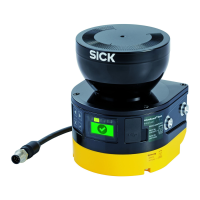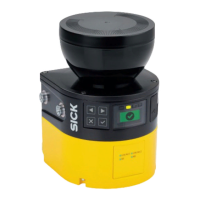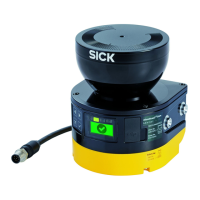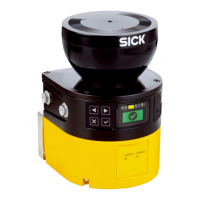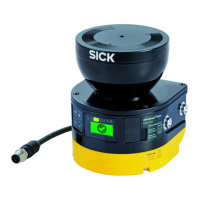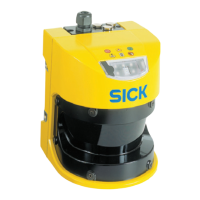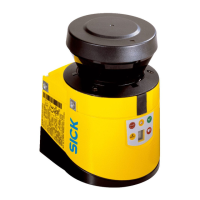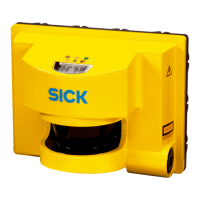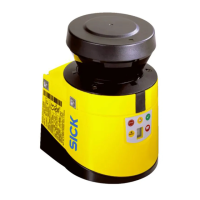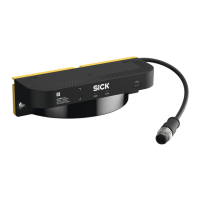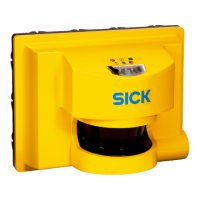4.4.2 Voltage supply
DANGER
H
azard due to lack of effectiveness of the protective device
In the case of non-compliance, it is possible that the dangerous state of the machine
may not be stopped or not stopped in a timely manner.
►
Make sure that the following control and electrical requirements are met so the
safety laser scanner can fulfill its protective function.
•
T
he power supply unit must be able to jumper a brief power failure of 20ms as
specified in IEC60204-1.
•
The safety laser scanner requires a supply voltage of 24V. For details about
tolerances and further connected loads, see "Data sheet", page 160.
•
The power supply unit must provide safe isolation according to IEC61140 (SELV/
PELV as per IEC60204-1).
13)
•
Make sure that the safety laser scanner is provided with an appropriate electrical
fuse protection. Electrical data for calculating what fuse is required, see "Data
sheet", page 160.
•
Use the same earthing method for all devices that are electrically connected to the
safety laser scanner.
•
Voltage must be supplied in accordance with SELV/PELV (IEC60204-1) for all
devices that are electrically connected to the safety laser scanner.
4.4.3 USB connection
The safety laser scanner has a USB connection for configuration and diagnostics.
T
he USB connection complies with the USB 2.0 mini-B standard (female connector).
The USB connection may only be used temporarily and only for configuration and diag‐
nostics. More information: see "Configuration", page 83 and see "Troubleshooting",
page 148.
4.4.4 EtherCAT
EtherCAT® (Ethernet for Control Automation Technology) is an Ethernet-based network
used in industrial automation.
With the Safety over EtherCAT® (FSoE, FailSafe over EtherCAT) protocol extension,
EtherCAT® is also suitable for safety-related data communication.
Information on pin assignment: see "Network connection for EtherCAT (XF1, XF2) and
Ethernet for data output, configuration and diagnostics (XF3)", page 81
4.4.5 Ethernet
The connection can be used for configuration, diagnostics, and data output.
Inf
ormation on pin assignment: see "Network connection for EtherCAT (XF1, XF2) and
Ethernet for data output, configuration and diagnostics (XF3)", page 81
4.4.6 Restart interlock
Depending on the regulations which apply at the place of installation, a restart interlock
ma
y be required.
The restart interlock prevents the machine from automatically starting up, for example
after a protective device has responded while the machine is operating or after chang‐
ing the machine’s operating mode.
13)
T
he voltage supply according to SELV has proven to be more reliable in demanding environments.
4 P
ROJECT PLANNING
62
O P E R A T I N G I N S T R U C T I O N S | microScan3 – EtherCAT® 8025220/1L9Q/2023-08-14 | SICK
Subject to change without notice
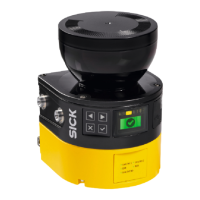
